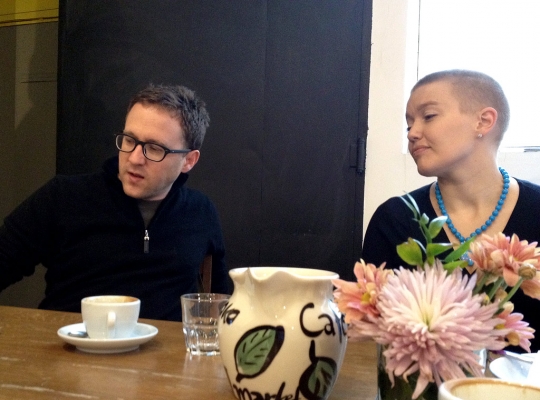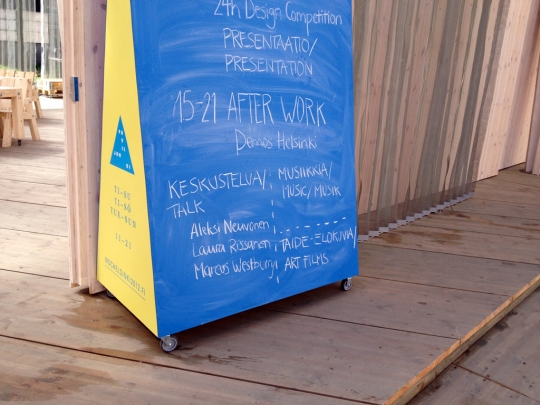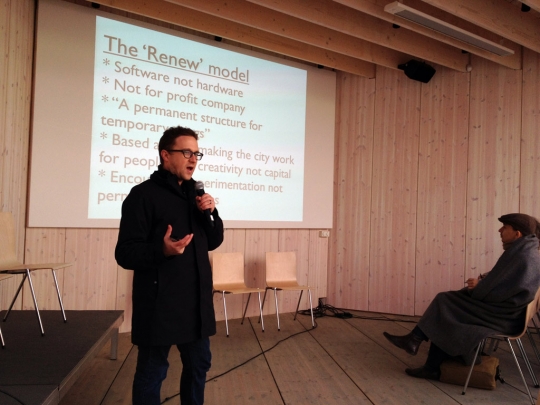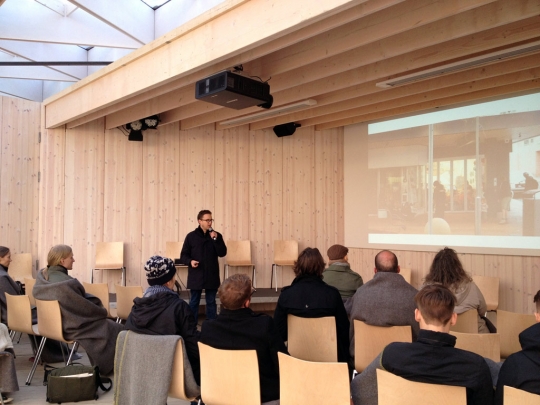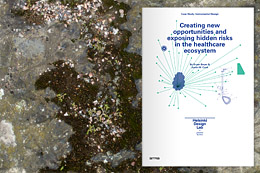Hello, it's me again, and so predictably this is a few days late.
Before I run through last week's events, I thought I'd share this. Bryan tweeted a Dezeen article about the new Shard tower in London—an interview with the lead architect, Renzo Piano—noting in particular the usefully low car parking provision. There are 87 floors in The Shard, 72 of which are habitable, and it has 47 parking spaces, essentially to cover the requirements of disabled people, according to Piano.
Having worked on a few so-called sustainable developments in my time (admittedly mostly in car-dominated Australian cities) this is extraordinarily impressive. Piano also notes that the direction here came from Mayor Ken Livingstone, which is also impressive—politicians driving that number down is rare; usually they're in a defensive mode, worried about their constituents (often underestimating their constituents' own ability to change, actually) and pushing back against the design teams.
Here in Helsinki, every day we look out onto Jätkäsaari, which is one of the city's strategic sites for sustainable development. A typical block there will be designed to have around 7 floors and have to make space for approximately 120 parking spaces. Both cities are well-served by public transport (in fact, Helsinki has previously been voted as having the best public transport in Europe) and Helsinki being a compact city, you could walk to most bits of central Helsinki from Jätkäsaari. This quite different parking ratio here is also directed by the city council, of course.
This disparity seemed so ludicrous I had to draw it. First, the two developments: The Shard at 87 floors, and 47 parking spaces; a new "sustainable" development in Helsinki's Jätkäsaari has 7 floors, and 120 parking spaces:

Parking spaces for The Shard tower, London versus parking spaces for Jätkäsaari sustainable development, Helsinki.
To put it another way, the ratio for The Shard is around 0.5 parking spaces per floor, whereas Jätkäsaari's ratio is around 17 spaces per floor. What if you applied the ratio for The Shard to Jätkäsaari and vice versa?
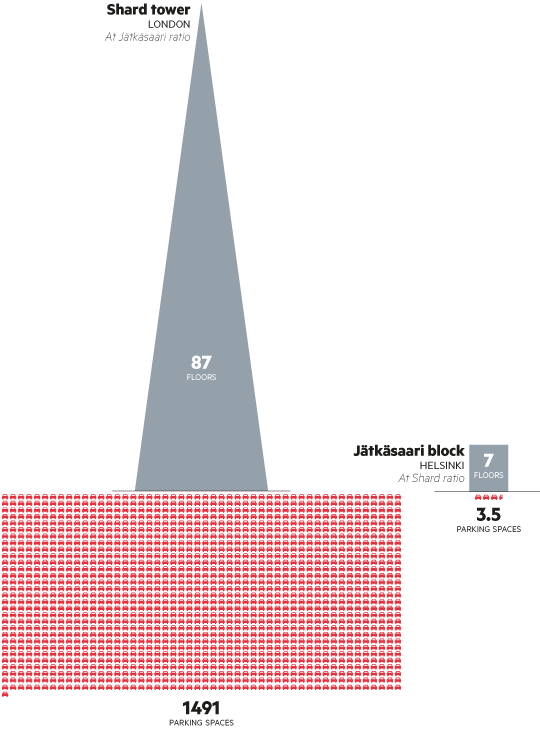
Parking ratio for Jätkäsaari block applied to Shard tower, and vice versa
Thought for the day.
Anyway, last week's thoughts had a big public holiday-shaped hole in them on Thursday, but the rest of the week was full of life.
I was knee-deep in designing Brickstarter mock-ups—more on that soon, but some old sketches are now up at brickstarter.org—and working with the Sitra management team on our new working patterns, workspaces and so on. Kalle was researching street food legislation in global cities, roaming (via the web) from Portland to Stockholm.
Meetings-wise, I had time for a poor cup of coffee but a good chat with Melinda Sipos, a Hungarian designer/artist whose provenance includes the seemingly excellent Kitchen Budapest. I met up with web developer Ville Kolehmaimen from Fusion Inc, had lunch with our own Pekka Salmi to discuss what we (Sitra) might research around crowdfunding legislation in Finland, and Kali Auvinen and I had a fascinating Brickstarter-related conversation RE NIMBYism and sustainable development with the chairman of the Finnish wind power association.
Meanwhile, Bryan was in the USA for an equally full week, culminating with a panel at the inspiring Studio-X NYC (run by our chums Geoff Manaugh and Nicola Twilley) which centred around the future of design practice in a plural, political world. He also was part of a panel at WantedDesign about the possibility of entrepreneurial design to sketch out new cultural possibilities, including +Pool, Brickstarter, and games that reveal the richness of the spectrum of possible social interactions. In between he was meeting and on the phone to line things up for HDL 2012.
Working across the Helsinki-Boston axis, Marco and Justin were embroiled in the usual intense stewardship required by our Low2No project.
Meanwhile, back in Helsinki, by the end of the week we were privileged to have Marcus Westbury of Renew Newcastle/Renew Newcastle fame in town. Marcus is an old colleague and friend from Australia, and we took advantage of him visiting London to bring him across to Helsinki for a couple of talks, as part of our Brickstarter research (for more on Marcus's work in this context, read the notes from this discussion we had a few months back, or this old post on "emergent urbanism" from my blog a few years ago.)
As those notes describe the general area I won't go into the ideas again here, suffice to say Marcus did a great talk for Sitra colleagues over lunch ...
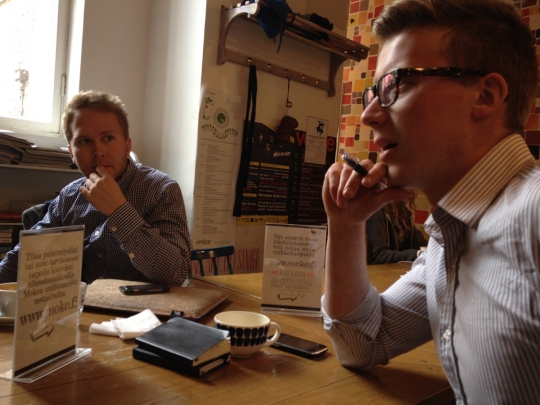
Kalle asks a question while Kalle looks on
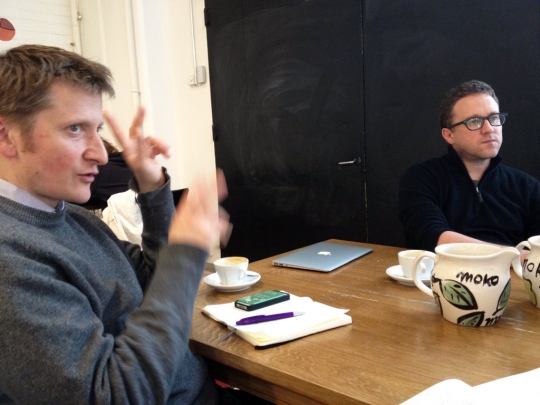
Marco reveals his Italian heritage
... And then Marcus repeated the feat for a public audience at a Demos Helsinki-curated "City 2.0" event at the World Design Capital Pavilion on Friday night.
Although it was so chilly that the pavilion felt like a wooden memorial to optimism, we had a good crowd of 40 to 50 or so (thanks!) and a good discussion after too.

An Australian suffering the Helsinki spring.
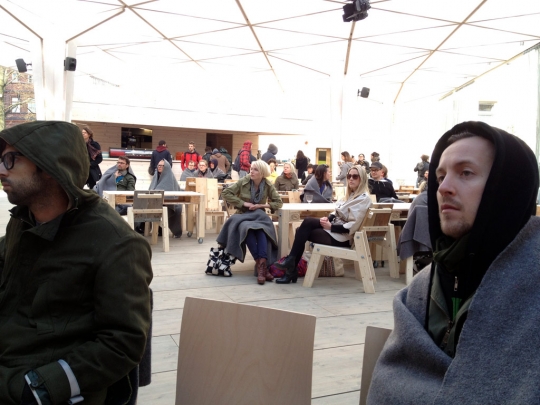
Finns suffering the Helsinki spring.
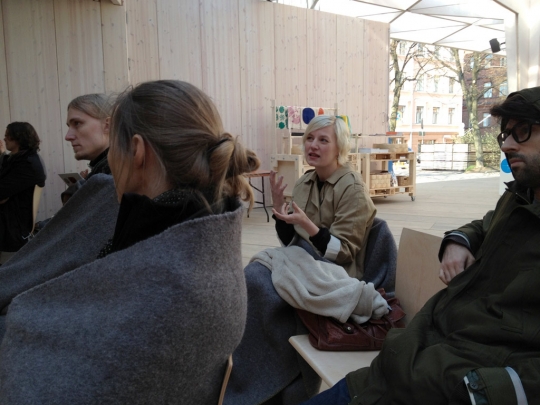
Marcus's talk generated a good Q+A, including discussion of similar projects here in Helsinki.
Thanks to Marcus for coming over, and sharing his numerous insights, and thanks also to Tommi and the Demos crew.
Fortuitously, the following Saturday was Ravintolapäivä, Helsinki's festival of pop-up restaurants, and so I was able to walk Marcus around that too. This was in no way a hardship—it was the city at its best—and easy on the stomach too. Ravintolapäivä demonstrates a different kind of urban activism to Renew, but they're derived from similar instincts: creating a framework for encouraging everyday experimentation within the city. Saturday also demonstrated to Marcus that spring in Helsinki can be warm.
I've written all that up over at City of Sound, so do have a read over there if you want to learn more about the wondrous event that is Ravintolapäivä aka Restaurant Day, and what it might mean for cities like Helsinki. While you're there, note the use of Kalle's coffee stall as a honey-pot for design research—more on that soon from Kalle.
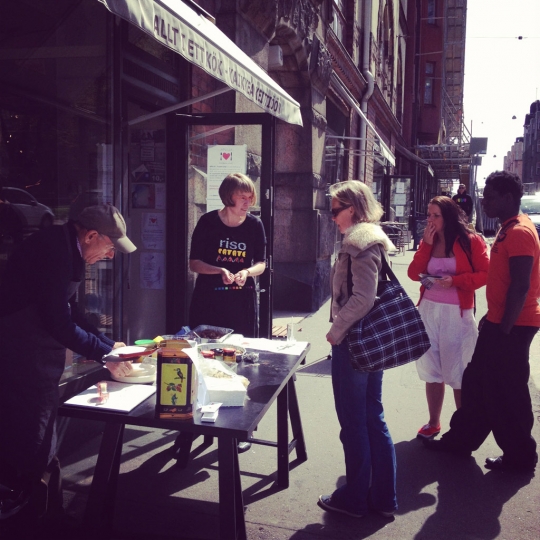
Ravintolapäivä is wonderful. Here, gourmet Italian food on the street.

